Browser extensions can be very helpful, especially when you have to perform tasks that require automation. When it comes to proxies, such a handy tool is FoxyProxy. By automating the process of switching your proxy servers on or off, this browser extension will optimize your online experience.
Whether you’re looking to scrape data, test websites, verify ads, or automate social media accounts, proxies are essential. Using reliable proxies with a Chrome and Firefox browser extension will ensure smooth operations without delays.
In this article, we’ll cover what FoxyProxy is, how to set it up on Google Chrome and Mozilla Firefox with IPRoyal’s proxies, and how to troubleshoot common issues for optimal performance.
What Is FoxyProxy?
FoxyProxy is a popular browser extension that makes managing proxy settings easier. It lets you change the default proxy settings on your browser and switch between multiple proxy configurations easily.
The extension supports HTTP, HTTPS, SOCKS5, FTP, and other internet protocols. It switches an internet connection across one or multiple proxies and works on Firefox, Chrome, and all Chromium based browsers like Vivaldi and Opera.
Let’s discuss some of the key features of FoxyProxy that make this extension so popular.
- Ease of Installation
FoxyProxy is easy to install and use and doesn’t require any extra software or plugins to function. The instructions are clear, so you can start adding new proxy profiles and using them right away.
- Ease of Proxy Management
As soon as FoxyProxy is running, you can start managing proxies from its menu with just a few clicks. You can add, edit, delete, or view any proxy, as well as import proxy servers from other apps.
- Rule Lists
This extension lets you create rule lists and customize conditions for URLs, domains, or IPs. In other words, it automates website blocking by redirecting you to another site when trying to visit a blocked one. This process makes managing blocked or blacklisted sites quick and easy.
- Multiple Proxy Server Profiles
Like anti-detect browsers, the FoxyProxy extension lets you create and manage multiple profiles for various tasks. Each of them can have its own settings, and you can easily switch between them as needed.
- Import and Export of Proxies
Transferring proxies between apps or devices can be time-consuming. But with this feature, you can easily import proxies from other apps or export existing ones to another device.
- Auto Switch
FoxyProxy lets you set up automatic redirection for a streamlined browsing experience. For example, when you connect to a site, it automatically determines if the browser supports HTTP/1.1. If the browser doesn’t support this, the extension will automatically switch to HTTP/2.
How to Set Up FoxyProxy on Google Chrome
Here are step-by-step instructions on how to set up FoxyProxy on Chrome with IPRoyal proxies.
1. Download and install the FoxyProxy extension, click on its icon (1), and select Options (2).
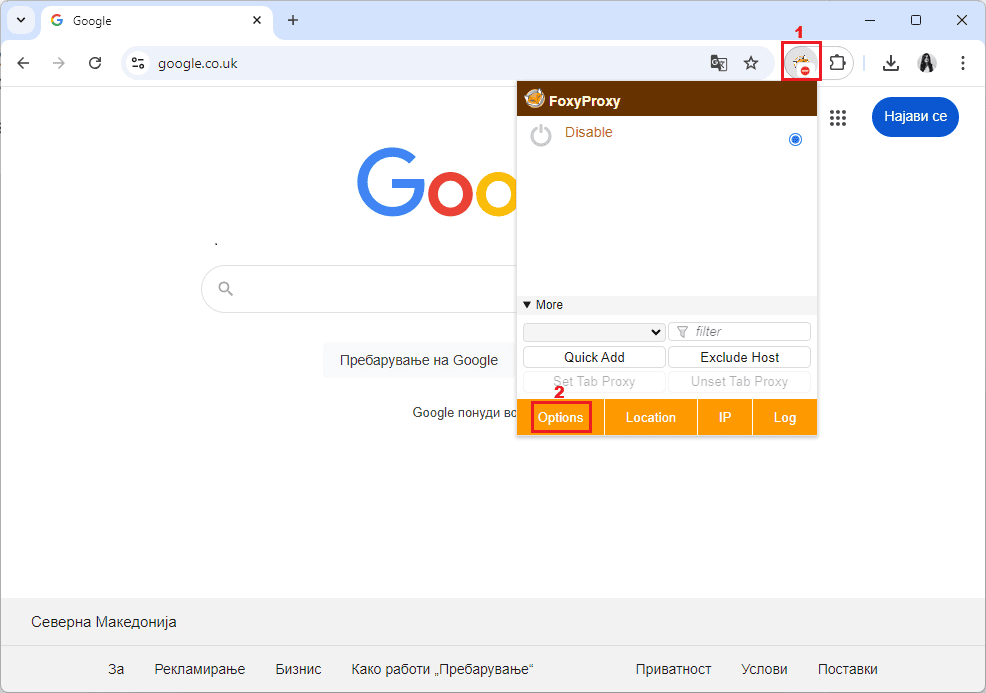
2. Navigate to the Proxies (3) tab and click the Add (4) button.
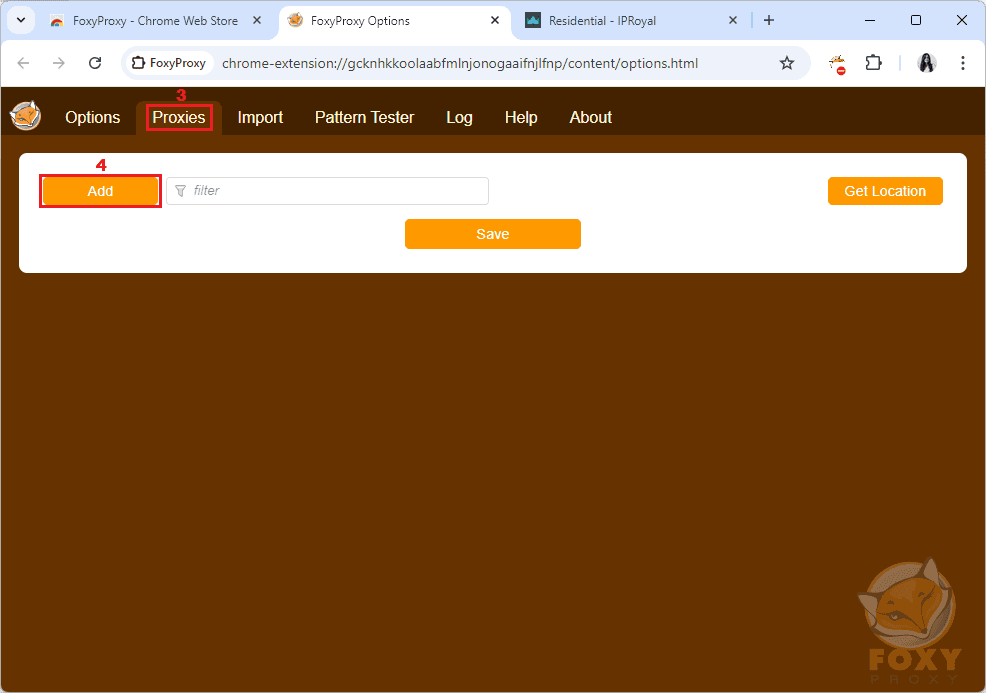
3. A new window will open, asking you to enter your proxy credentials.
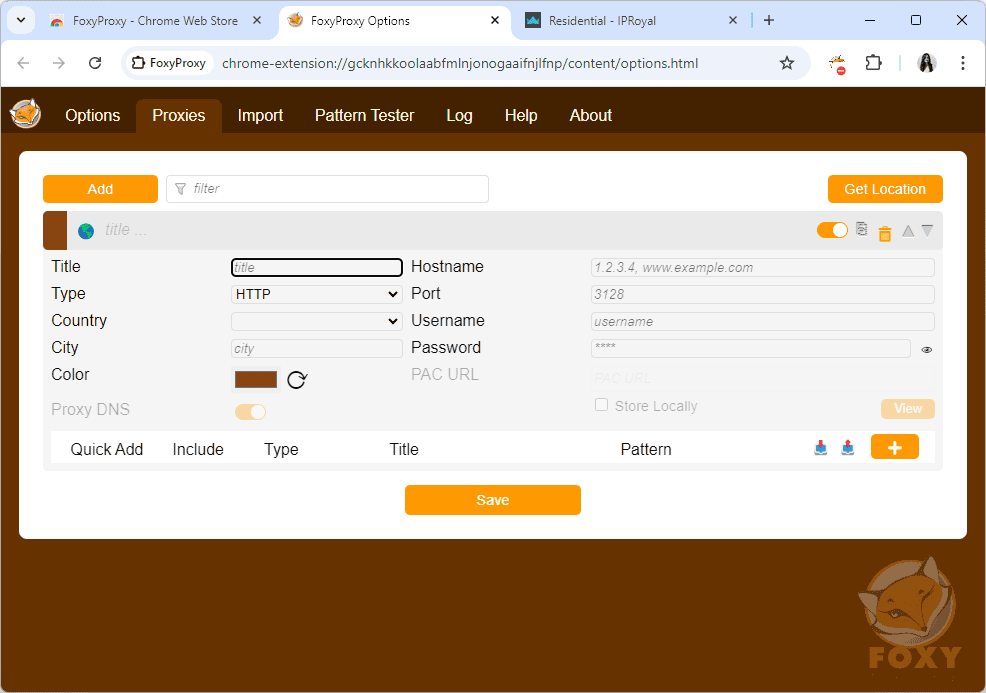
4. Go to your IPRoyal dashboard to configure your proxy settings. We’ll use residential proxies which allow you to select the IP location (5), protocol (6), rotation (7), and session duration (8). In this case, we’ll use high-end residential proxies from Cincinnati, the US, with HTTP/HTTPS support and sticky sessions lasting for 3 hours.
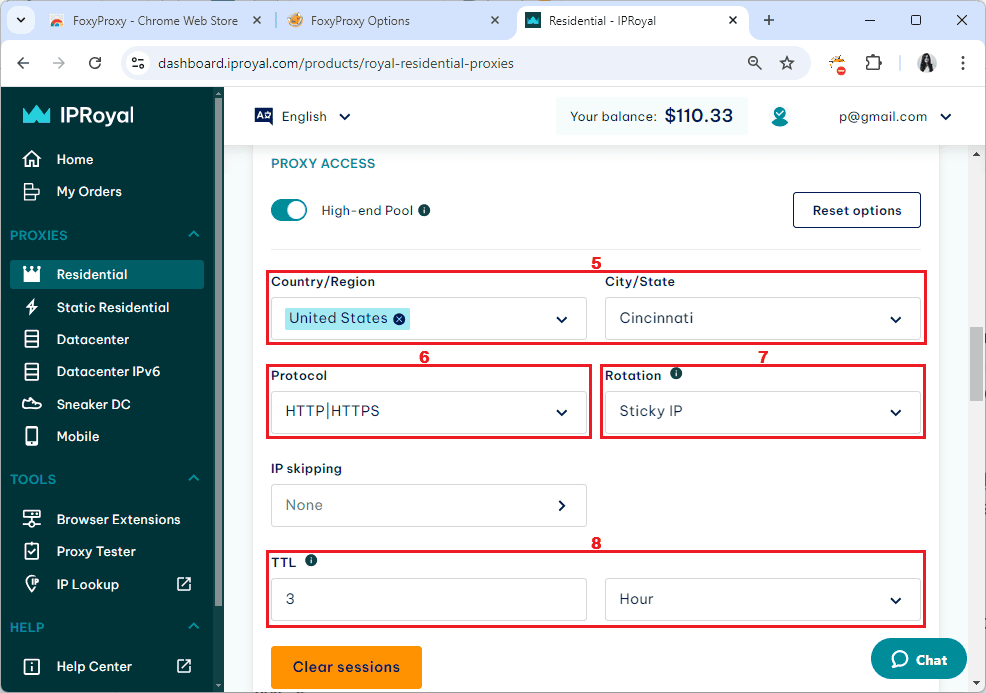
5. Copy your proxy credentials (hostname, port, username, and password), from the IPRoyal dashboard and paste them in the appropriate fields in the extension (9). You can also manually name the proxy (10) and set the location (11). Then, click the Save (12) button.
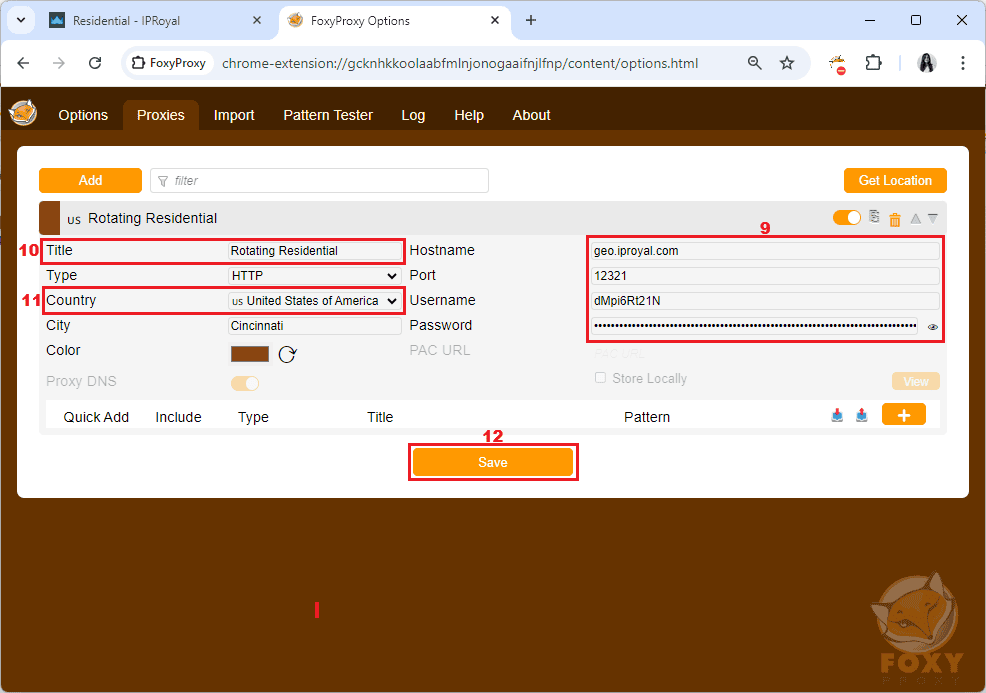
6. FoxyProxy also allows you to add an entire list of proxies. You can do that by navigating to the Import (13) tab and selecting Import Proxy List (14).
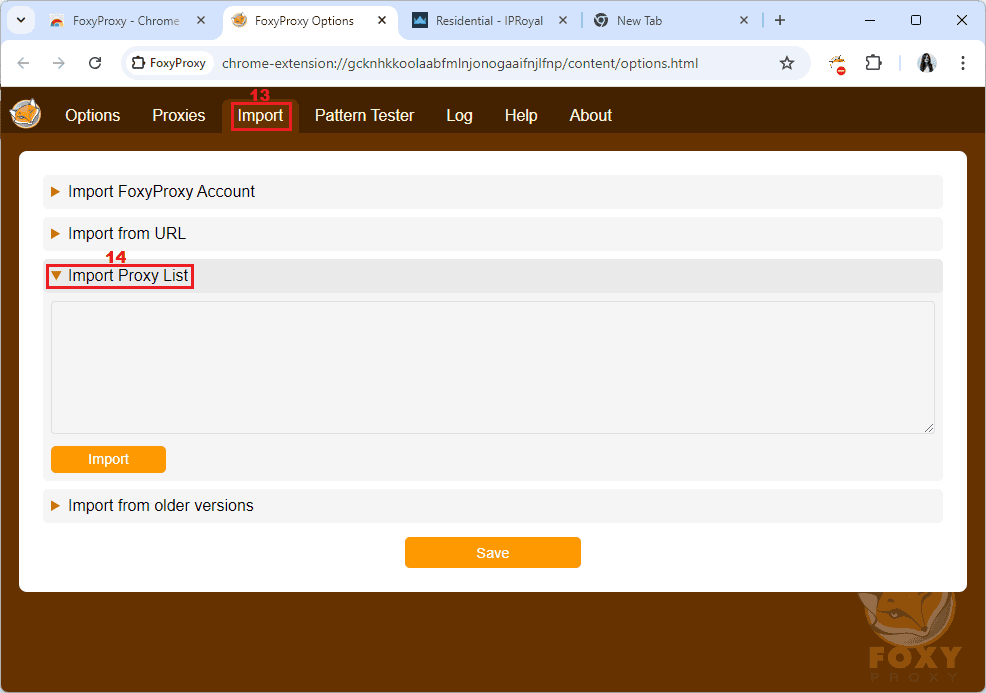
7. Go back to the IPRoyal dashboard, scroll down to find the Formatted Proxy List section, and click the Copy (15) button to copy your list.
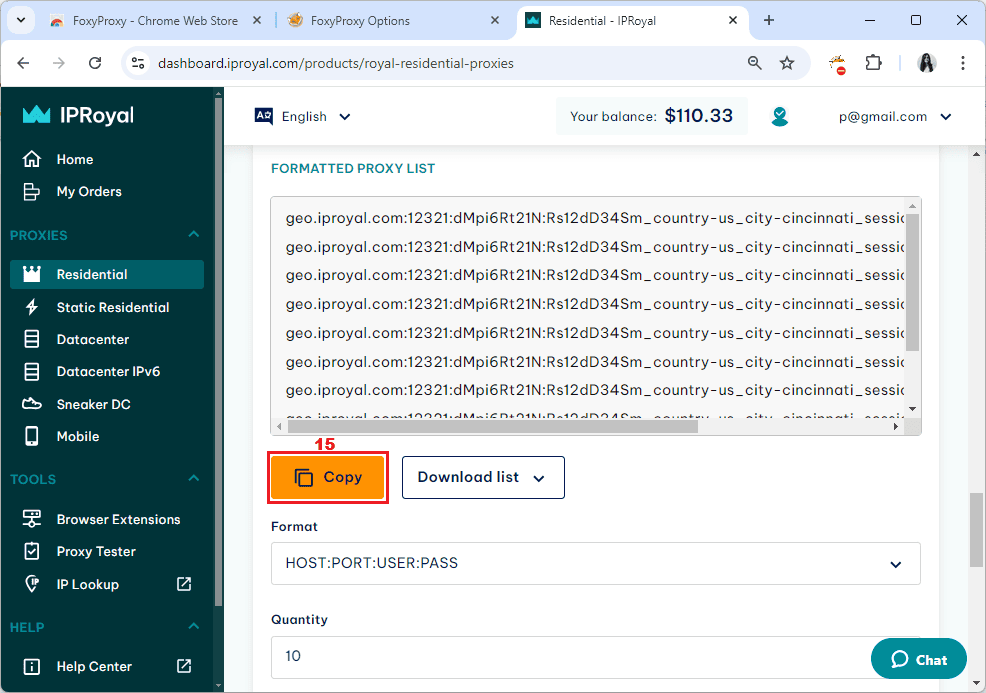
8. Paste the proxy list to the designated field and click Import (16).
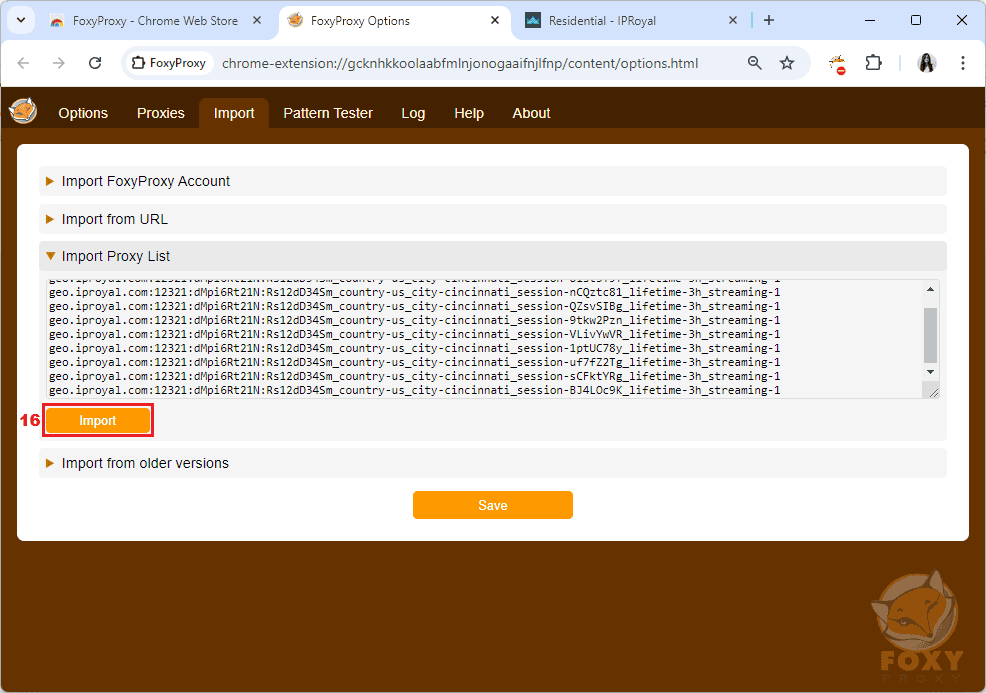
9. You’ll see a list of all your proxies, including the ones which were imported. Clicking each proxy from the list will give you an option to name your proxy server and set the location manually. Then, click the Save button (17) to save all the changes.

10. FoxyProxy has another useful feature called Global Excludes, which allows you to access specific URLs directly and not from your active proxy. You can find it under the Options (18) tab. Just add the URLs here (19), click Save (20), and your active proxy server won’t be used for them.
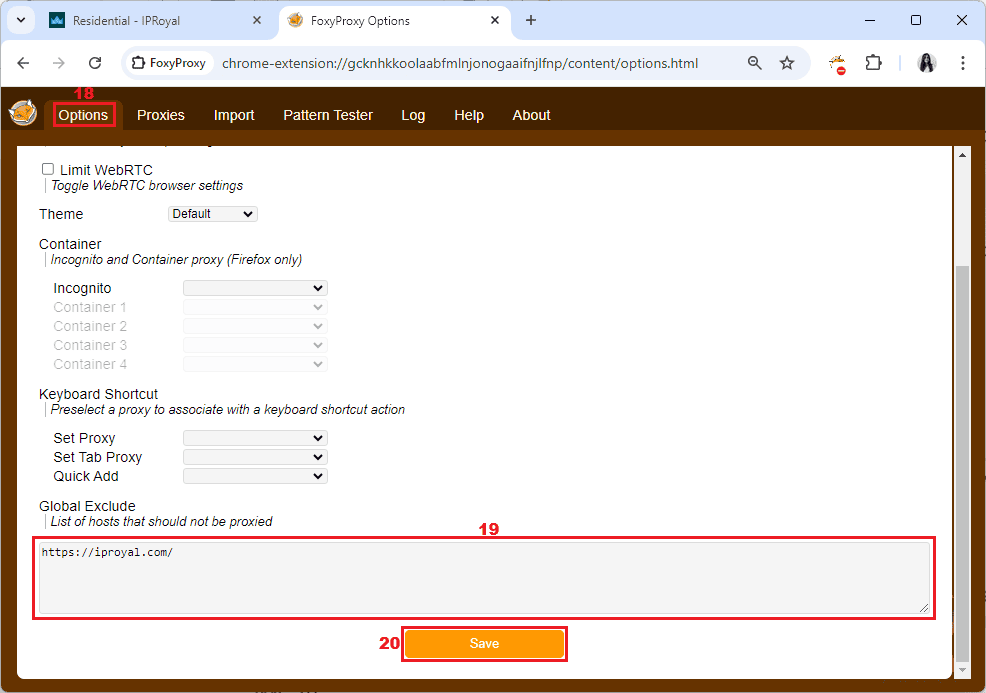
11. All you have to do now is click the FoxyProxy icon (21) and select the proxy you want to use (22).
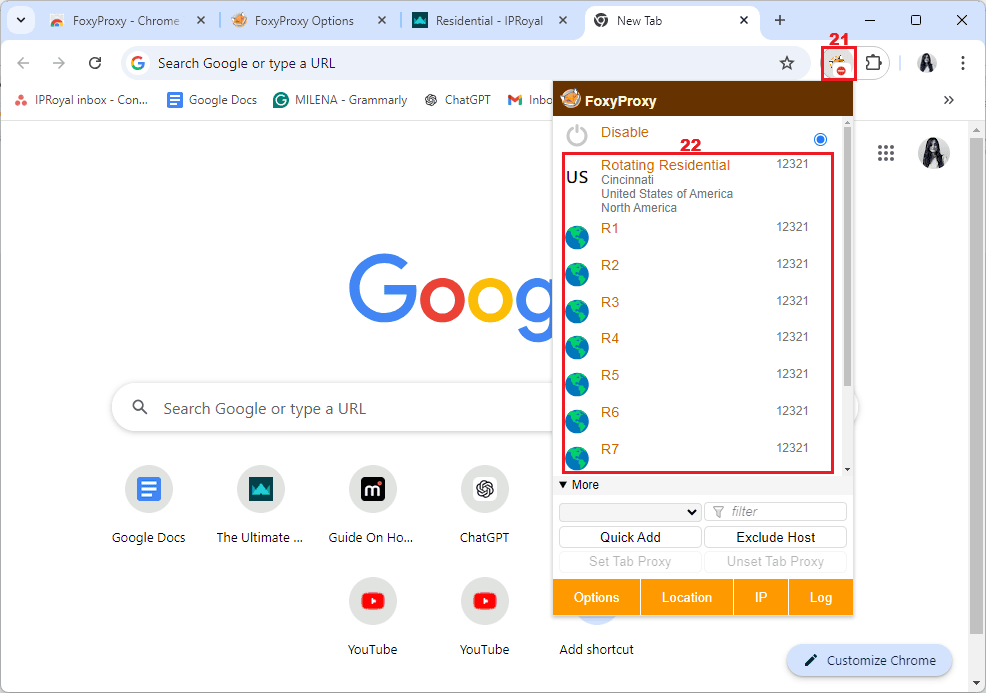
How to Set Up FoxyProxy on Mozilla Firefox
Follow the steps below to get started with FoxyProxy on Mozilla Firefox using IPRoyal proxies.1. Download and install the Firefox extension, click its icon (1), and select Options (2).
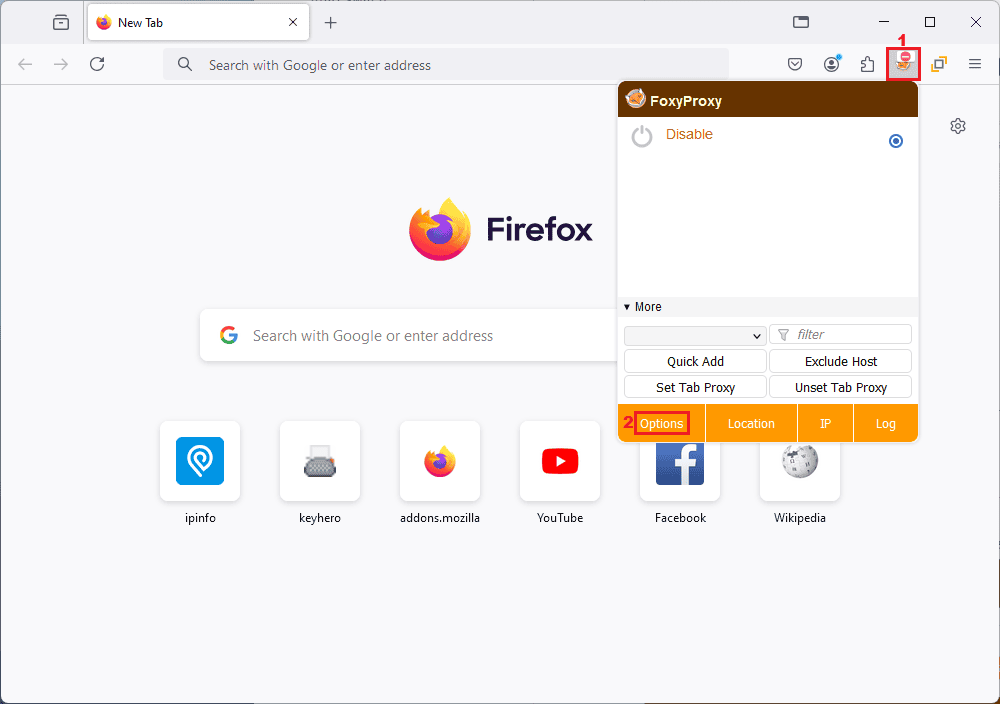
2. Select the Proxies (3) tab and click the Add (4) button.
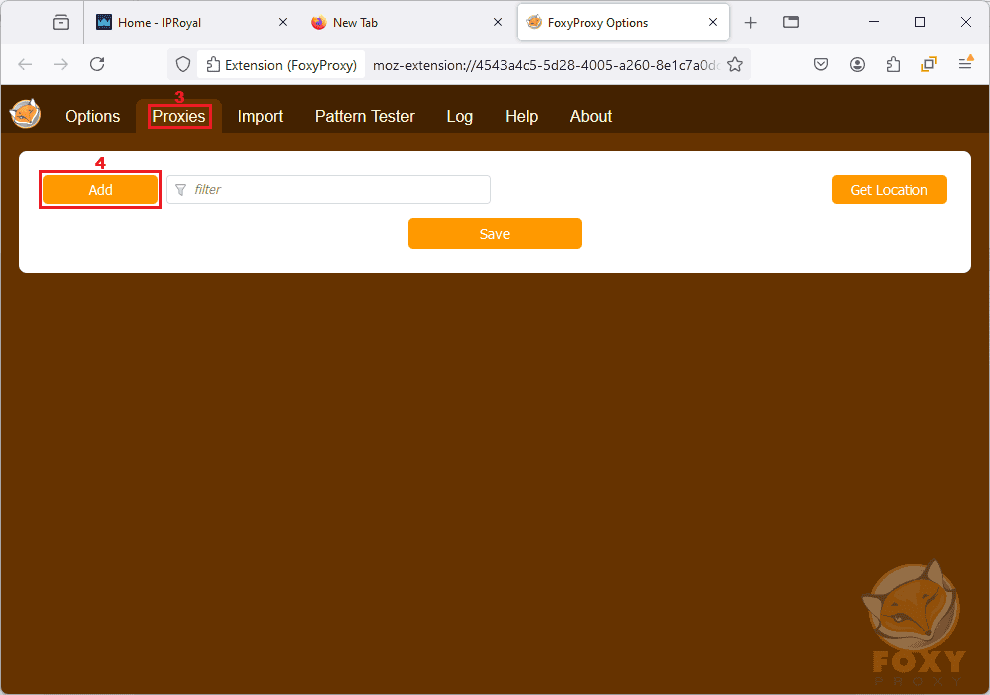
3. A window will open to add your proxy credentials (5), manually name your proxy server (6), and set the location (7).

4. Go to your IPRoyal dashboard to find your proxy credentials. Once again, we’ll use our residential proxies, which allow you to select their location (8), protocol (9), and rotation (10). This time, we’ll use high-end residential proxies from Sydney, Australia, with HTTP/HTTPS support and IPs that change per request.
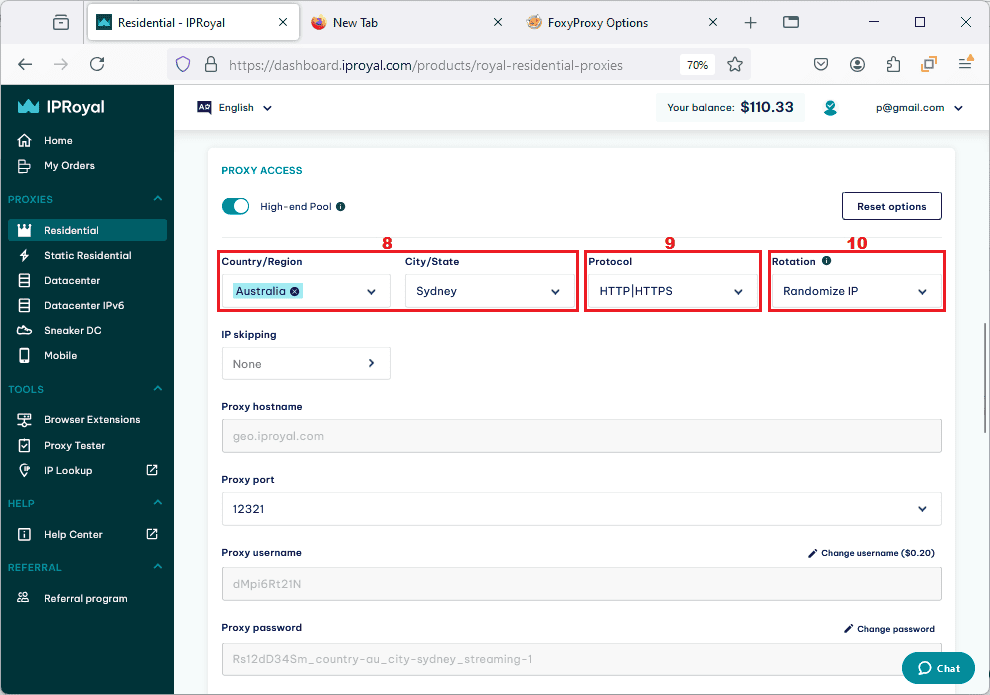
5. Copy your proxy credentials (hostname, port, username, and password) from the IPRoyal dashboard and paste them in the appropriate fields (11). You can also name the proxy (12) and manually set the location (13) and color to make it easier to see which proxy is in use. Then, click the Save (14) button.

6. Just like the FoxyProxy extension for Chrome, this one also allows you to import proxy lists. Select the Import (15) tab, click the Import Proxy List (16) option, and add your proxy list.
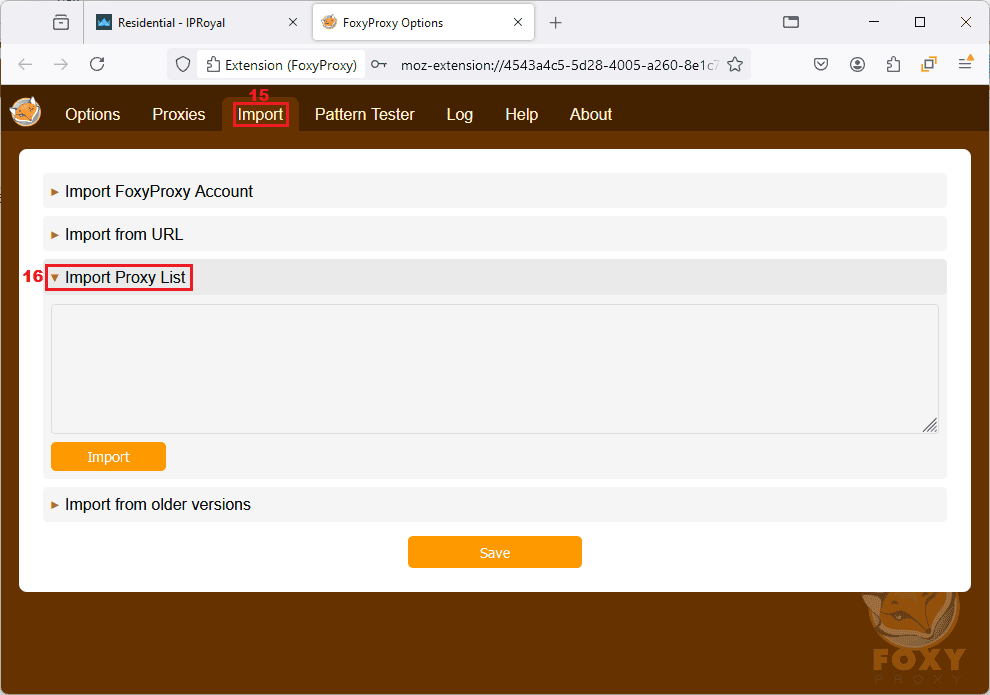
7. To get your IPRoyal proxy list, click the Copy (17) button under the Formatted Proxy List section in your IPRoyal dashboard.
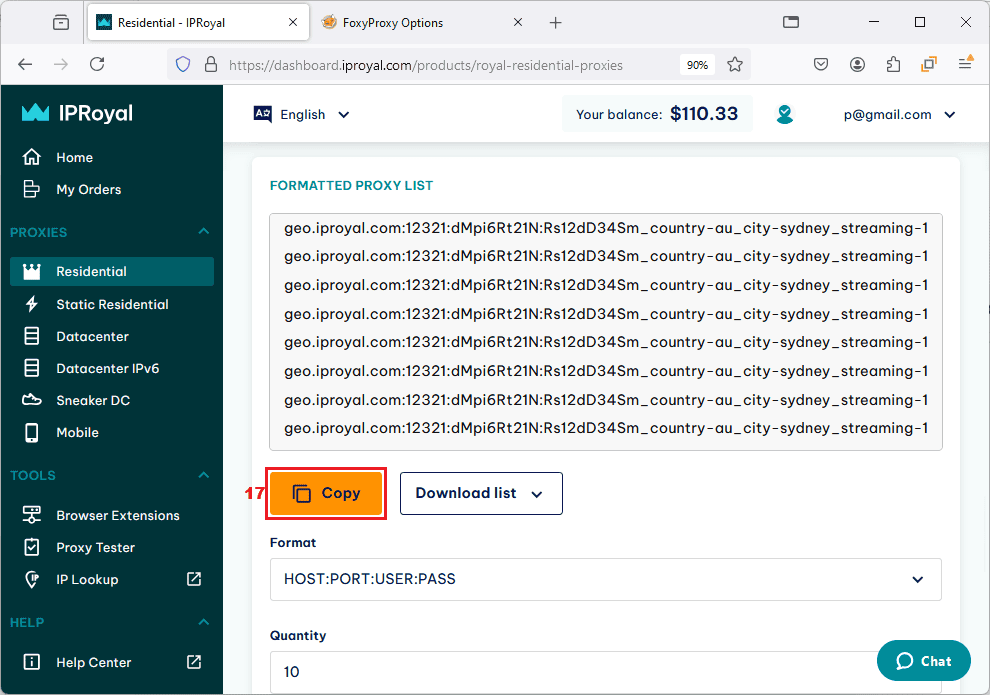
8. Paste it in the empty field (18) and click Import (19).
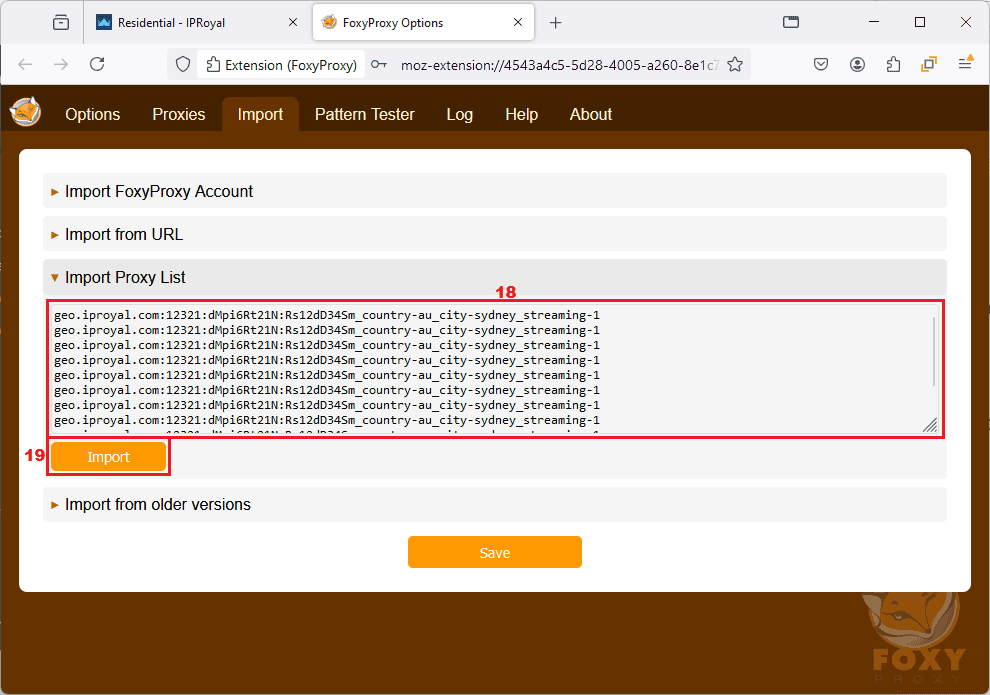
9. You can now see all of your proxies, and clicking on any of them will let you name the proxy server and set the location manually.
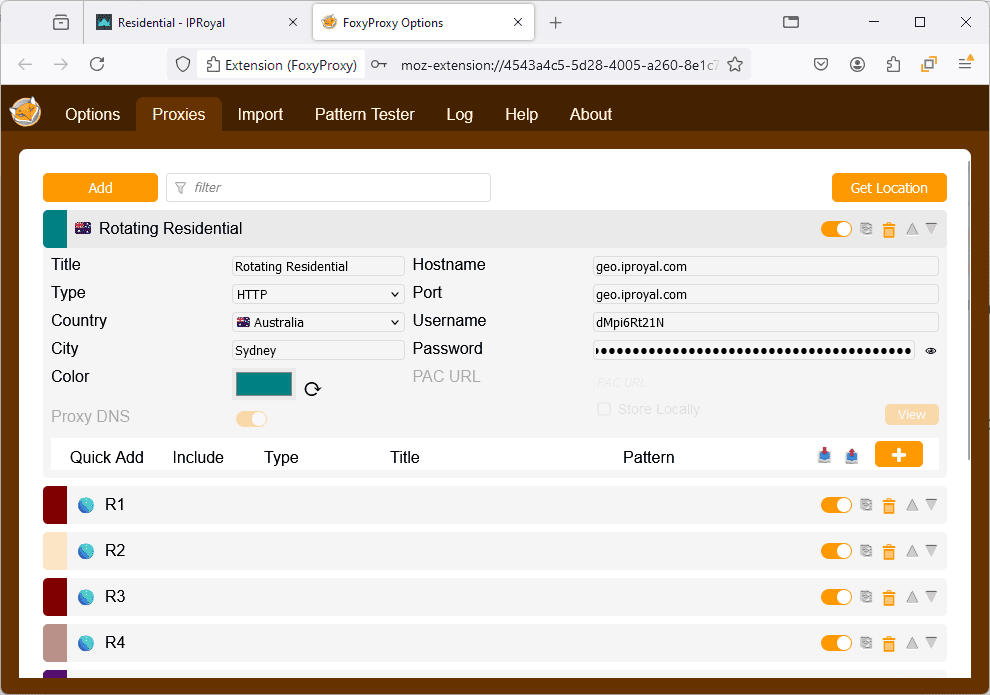
10. If you don’t want to access certain URLs with your active proxy, you can take advantage of the Global Exclude feature. Navigate to the Options (20) tab, scroll down, and you’ll see it. Add any URLs that you want to access directly in the field (21) and click Save (22).

11. Then, open a new tab, click the FoxyProxy icon (23), and choose the proxy server you want to use (24).
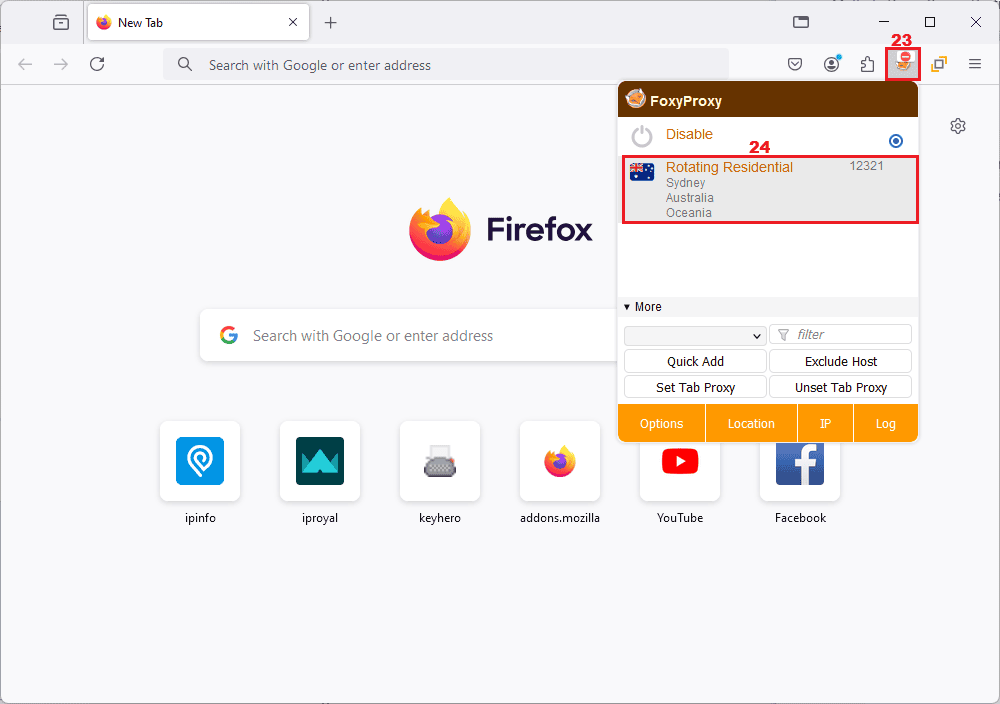
12. To stop using the proxies added to your FoxyProxy extension, just click its icon and select Disable (25).
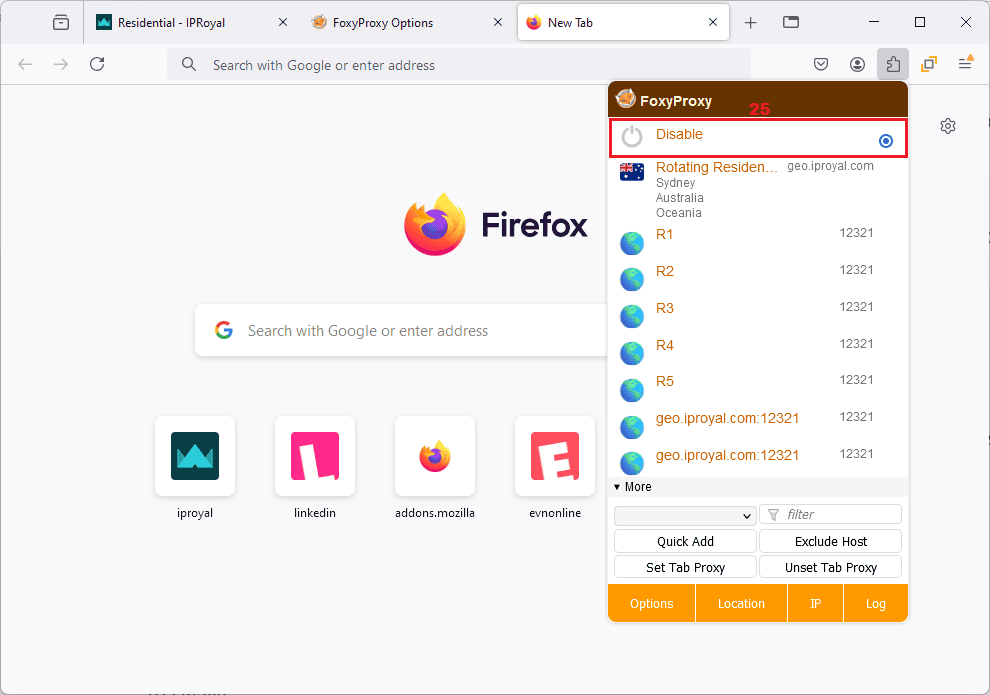
Advanced Features of FoxyProxy
FoxyProxy has a lot of useful features that can help you make the most of it and, at the same time, optimize your proxy usage. The URL Patterns is one of them, letting you add URLs to the list so that the proxy won’t be used when you access them.
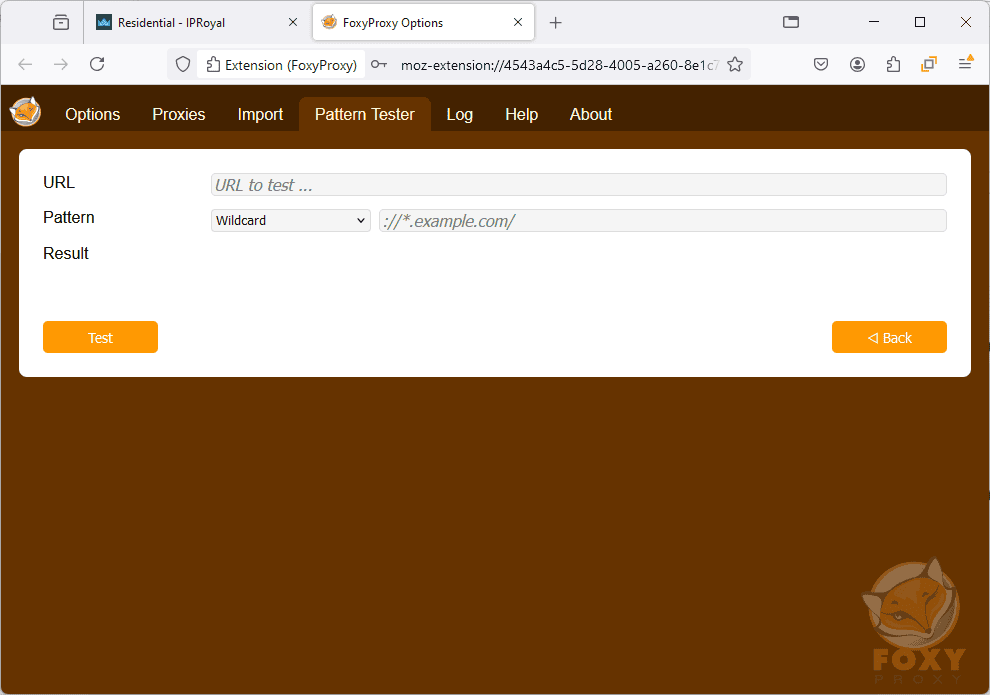
With the URL patterns feature, you can save bandwidth and only use your proxies where you need them.In addition, the option to customize colors and country flags is useful for setting your proxies apart more easily and knowing which of them is in use.These and all the other FoxyProxy features we already covered allow you to use proxies with greater flexibility.
Troubleshooting Common Issues
If you can’t find the URL Patterns function, it’s probably because you’re using the FoxyProxy Basic version. Download and install FoxyProxy Standard from the Firefox or Chrome store, and you should be able to access and use it. Both versions are free and work the same way.
In case your proxy can’t access the geo-restricted content you want, check to see if it uses an IP address in the location stated by the provider. You can do that by visiting our IP Lookup page or any other similar website to check the location of your active proxy IP address and ensure it matches the one stated by the provider.
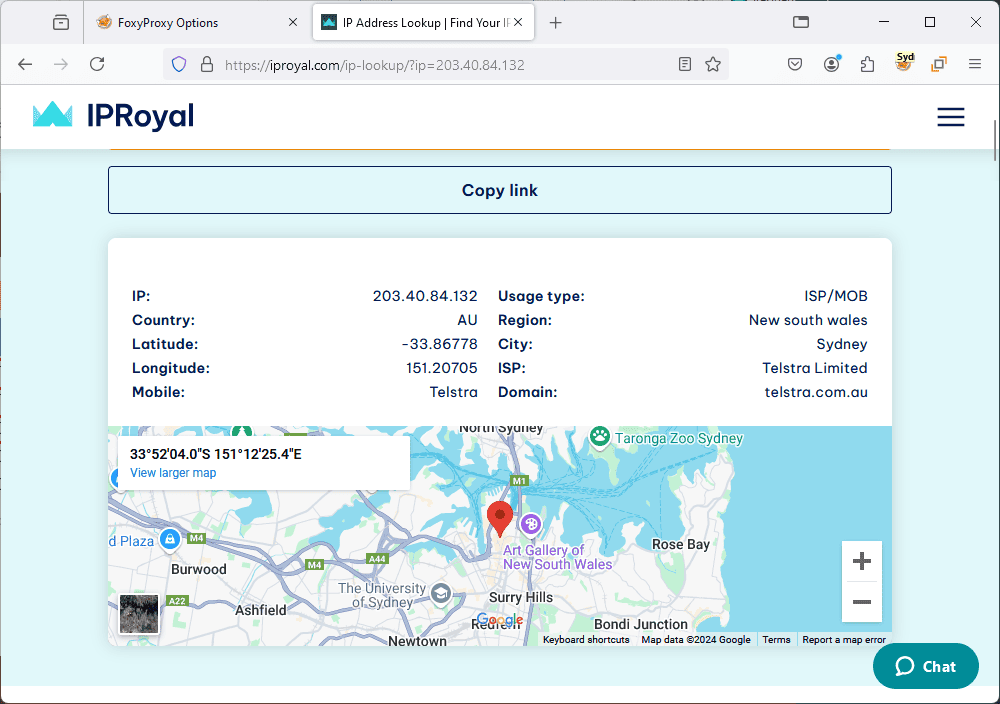
Final Words
FoxyProxy and IPRoyal’s reliable proxies make a perfect combination for anyone seeking seamless proxy management and optimal privacy. Whether you’re using Chrome, Firefox, or any of the Chromium based browsers, FoxyProxy can help you manage your proxies and switch between them with a single click.
Follow our up-to-date instructions on how to set up FoxyProxy on both Firefox and Chrome browsers with IPRoyal’s residential proxies, and you’ll take your online experience to the next level.



